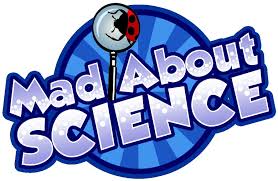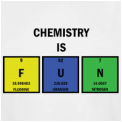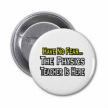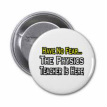Junior Certificate Science Introduction
Science is one of the most interesting and dynamic Junior Certificate subjects due to the relevancy of the topics and the practical nature of the subject. Both plant and animal Biology is covered as is the fundamentals of Chemistry and Physics. There are two well-equipped Science laboratories here at St. Mary’s and students' work are proudly displayed on the walls.
Junior Certificate syllabus link:
Here is a list of topics studied in each year of the three year course and some links to help revision:
First Year Science
First Year Science
|
Introduction to Science safety and equipment.
Page in text book: 1-2 Living things. Page in text book: 3-6 States of matter. Page in text book: 128-132 Cells and microscopes. Page in text book: 11-15 Elements compounds and mixtures. Page in text book: 136-141 Measurement. Page in text book: 247-251 Human skeleton and muscles. Page in text book: 56-58 Solutions, solubility and crystallisation. Page in text book: 145-148 Force, friction and Hook’s law. Page in text book: 267-271 Food. Page in text book: 18-23 Separation techniques. Page in text book: 154-159 Work, energy and energy conversions. Page in text book: 292-299 Digestive system. Page in text book: 27-29 Acids and bases part 1. Page in text book: 163-165 Heat and expansion. Page in text book: 303-305 https://www.youtube.com/watch?v=svqieBM2ijs |
Click on image to try a quiz!
Click on image to revise living things!
Click on image to revise about the states of matter!
Click on image above to revise about cells!
Click on image to revise elements and compounds.
Click on image above to revise the skeleton and muscles!
Click on image to revise solubility and solutions!
Click here to revise about food and nutrients!
Click on image above to revise about energy!
Click on image above to revise the digestive system!
Click on image above to revise acids and bases!
Watch video above for lots of useful information on heat energy!
|
Second Year Science
|
Circulatory system. Page in text book: 44-47 Magnetism. Page in text book: 336-340 Plant structure and transport. Page in text book: 80-83 Air. Page in text book: 169-172 Oxygen. Page in text book: 173-176 Respiration. Page in text book: 33 Photosynthesis. Page in text book: 86 Light. Page in text book: 318-322 Human breathing. Page in text book: 38-40 Atomic structure. Page in text book: 204-206 Sound. Page in text book: 328-331 Ecology and conservation. Page in text book: 115-120 Water. Page in text book: 184-191 Acids and bases part 2. Page in text book: 194-200 Static electricity and electrical current. Page in text book: 342-348 |
Click on image above to revise the circulatory system!
Click on image above to revise magnetism!
Click on box above to watch video on plant transport!
Click on image above to revise oxygen topic!
Click on image above to revise respiration!
Click on image above to revise photosynthesis!
Click on image above to revise light!
Click on image above to revise human breathing!
Click on image above to revise atoms!
Click on image above to revise ecology!
Click on image above to revise the water topic!
Click on image above to revise static and current electricity!
|
Third year Science
|
Plant reproduction. Page in text book: 93 Tropisms. Page in text book: 88 https://www.youtube.com/watch?v=pCFstSMvAMI Bonding. Page in text book: 219-224 Density. Page in text book: 257-260 Microbiology. Page in text book: 122-124 Rusting. Page in text book: 242 Weight, centre of gravity and levers. Page in text book: 277-280 Reactivity of metals. Page in text book: 233-239 Excretory system. Page in text book: 53-54 Fossil fuels and acid rain. Page in text book: 199-202 Sensory system. Page in text book: 62-63 http://www.sciencequiz.net/jcscience/jcbiology/gapfilling/sensorysystem.htm Plastics. Page in text book: 243 Speed, power and acceleration. Page in text book: 260-264 Heat and latent heat. Page in text book: 314 Electricity and electronics. Page in text book: 349-362 Pressure. Page in text book: 285-289 Sexual reproduction. Page in text book: 67-74 |
Click on image above to revise plant reproduction!
Click on link above to revise the bonding topic!
Click on box above to watch a video on density!
Click on image above to revise microorganisms!
Click on image above to play a game using moments and levers!
Click on image above to revise metal chemistry!
Click on image above to revise the excretory system!
Click on link above to revise fossil fuels and acid rain!
Click on image above to take a quiz on the sensory system!
Click on image above to revise the difference between speed and velocity!
Click on image above to revise latent heat!
Can you light the light bulb?
Click on the box above to watch a video on pressure!
Click on image above to revise sexual reproduction and genetics!
|
Coursework A and B
Course work A- 10% of Junior Certificate grade:
This is the completion and recording of 30 mandatory experiments in the white experimental book. As this book must be presented at the end of the third year fully completed it’s safe keeping is extremely important.
Course work B- 25% of Junior Certificate grade:
This involves the completion and recording of two experiments within class time and without teacher assistance. Titles for course work B are released just before Christmas and must be completed by Easter. Due to the large amount of marks awarded for this course work student attendance during this time is extremely important.
Links to help with coursework A and B:
http://thinkforyourself.ie/2011/06/12/junior-cert-science-revision-the-experiments/
http://www.education.ie/en/Schools-Colleges/Information/Curriculum-and-Syllabus/Junior-Cycle-/Syllabuses-Guidelines/jc_science_asses_coursework.pdf
Links to help revision:
https://www.studyclix.ie/
http://www.mrcjcs.com/
http://www.thephysicsteacher.ie/index.html#.U474Z7dOW1s
This is the completion and recording of 30 mandatory experiments in the white experimental book. As this book must be presented at the end of the third year fully completed it’s safe keeping is extremely important.
Course work B- 25% of Junior Certificate grade:
This involves the completion and recording of two experiments within class time and without teacher assistance. Titles for course work B are released just before Christmas and must be completed by Easter. Due to the large amount of marks awarded for this course work student attendance during this time is extremely important.
Links to help with coursework A and B:
http://thinkforyourself.ie/2011/06/12/junior-cert-science-revision-the-experiments/
http://www.education.ie/en/Schools-Colleges/Information/Curriculum-and-Syllabus/Junior-Cycle-/Syllabuses-Guidelines/jc_science_asses_coursework.pdf
Links to help revision:
https://www.studyclix.ie/
http://www.mrcjcs.com/
http://www.thephysicsteacher.ie/index.html#.U474Z7dOW1s



































